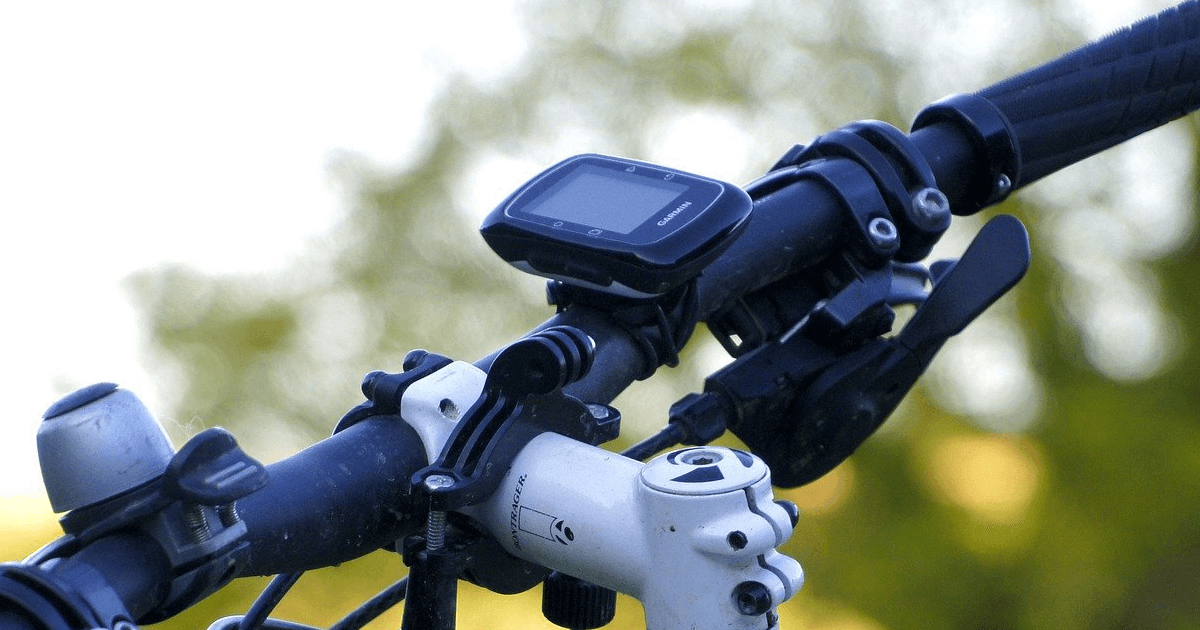Data Sources Used in Cycling Computers
There are six main types of data sources used for display in cycling computers.
- Wired sensors
- Wireless sensors
- Positioning satellites (GPS, GNSS, GLONASS, GALILEO, etc.)
- Barometric sensors
- Compass sensors
- Battery data
Sensor-based methods involve attaching sensors to the bicycle to obtain data such as rotation and power. These have been long-established data sources. Nowadays, wireless sensors have become the mainstream.
Positioning satellites have become more common in recent years. Since cycling computers can obtain speed and other data on their own without external sensors, this method allows for a smarter and more streamlined setup.
Barometric sensors are used to measure temperature and altitude. In cycling computers, they are primarily used for altitude, from which gradient and elevation gain can be calculated based on altitude and distance.
Compass sensors are typically used in cycling computers with navigation features. By determining which direction the rider is facing, they help make navigation displays easier to understand. They are also useful when riding on mountain paths without paved roads.
Battery data is mainly used for electronic shifting systems. For example, Shimano’s Di2 or SRAM’s RED. If the components and the cycling computer are compatible, the remaining battery level of the electronic parts can be checked. Some manufacturers also allow the current gear to be displayed.
Which Data Source Is Better?
Positioning Satellites vs. Sensors
One of the main purposes of using a cycling computer is to measure speed and distance traveled. These are obtained either through positioning satellites or sensors.
The three main differences between the two are “accuracy,” “amount of data that can be obtained,” and “compactness.”
In terms of accuracy, sensors that collect rotation data directly from the bicycle have the upper hand. Unlike satellites, they don’t suffer from reception issues, making sensors more reliable. Also, due to their simple structure, there is little variation in data accuracy between products, making them a trustworthy data source.
However, sensors can only provide “real-time values.” They cannot capture more complex information such as “where” and “how” you rode. Additionally, you must manage battery life for the sensors, and in the case of wired sensors, deal with cable routing—leading to a loss in aesthetics and increased hassle.
On the other hand, the biggest advantages of positioning satellites are “location tracking” and “compactness.”
Cycling computers using GPS and other positioning systems calculate speed and distance based on “how far you’ve moved” using your current location coordinates. Since they are constantly recording coordinates, they can also log your ride. No external sensors are needed, which helps keep your bike looking clean and minimal.
The drawbacks of positioning satellites are signal reception and accuracy. These factors depend heavily on:
- Supported satellites
- Sensitivity of the cycling computer’s antenna
Even if a device supports many satellite systems, if the cycling computer uses a weak satellite antenna, the overall accuracy will still be poor.
So even though something may be labeled a “GPS cycling computer,” the actual data accuracy can vary greatly depending on the product.
Wired Sensors vs. Wireless Sensors
When using sensors as a data source, one common dilemma is whether to choose “wired or wireless.”
Wired sensors offer peace of mind with uninterrupted data transmission. However, they tend to be exclusive to specific systems, require cable routing, and limit flexibility in choosing the mounting location for your cycling computer.
On the other hand, wireless sensors—such as those using Bluetooth or ANT+—can often be reused even if you switch cycling computer brands, and can also be used with smartphones.
However, there are downsides. Some sensors may experience interference from devices like battery-powered lights (though interference is rare with Bluetooth or ANT+), and compatibility issues between devices can arise. Additionally, some products may suffer from reduced data accuracy.
Today’s cycling computers commonly support both Bluetooth and ANT+ wireless sensors. But if all you want is basic speed and distance data, traditional wired sensors can still be the most reliable option.
Choose Your Cycling Computer’s Data Source Based on the Data You Want and the Accuracy You Need
While having more data sources in a cycling computer is generally better, it also means higher functionality and cost.
If you only care about “speed and distance,” buying a sensor-packed, high-end cycling computer may be overkill. On the other hand, if you want “power and heart rate” but buy a cycling computer that doesn’t support Bluetooth or ANT+, it won’t serve your needs.
By determining what kind of data you want and how accurate it needs to be, you’ll be able to choose the right cycling computer with the appropriate data sources.
1
